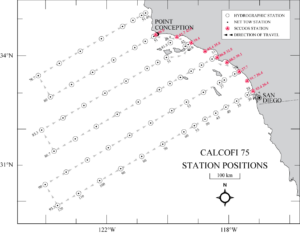Sampling Information
Overview
Scientific operations on CalCOFI cruises are conducted around the clock 7 days a week with scientists, technicians, and volunteers working 12-hour shifts. The time spent at each station averages ~2 hours but varies depending on depth & station activities.
Shorter stations:
- CalCOFI standard stations less than 515 m deep (~11 per 75 station cruise) take 30 mins to 1.5 hours depending on depth (determines CTD/net sampling depths).
- SCCOOS stations that are 20 m deep (9 per cruise) take about 30 mins because CTD casts are ~15 m deep (3 – 4 bottles) and the Bongo is the only net towed (to 20 m).
Longer stations:
- Daily primary productivity stations (before/around local apparent noon, “LAN”) take ~3 hours because of increased CTD sampling.
- The Santa Monica Basin and Santa Barbara Basin stations take ~3 hours because of deeper and increased CTD sampling.
Transits:
In good weather, the ship transits at ~10 knots. Transits between nearshore stations take ~2 hours (e.g. 93.50 and 93.55 are 20 nautical miles apart) and transits between offshore stations take ~4 hours (e.g. 93.60 and 93.70 are 40 nautical miles apart). Transit times between stations are heavily influenced by sea state.
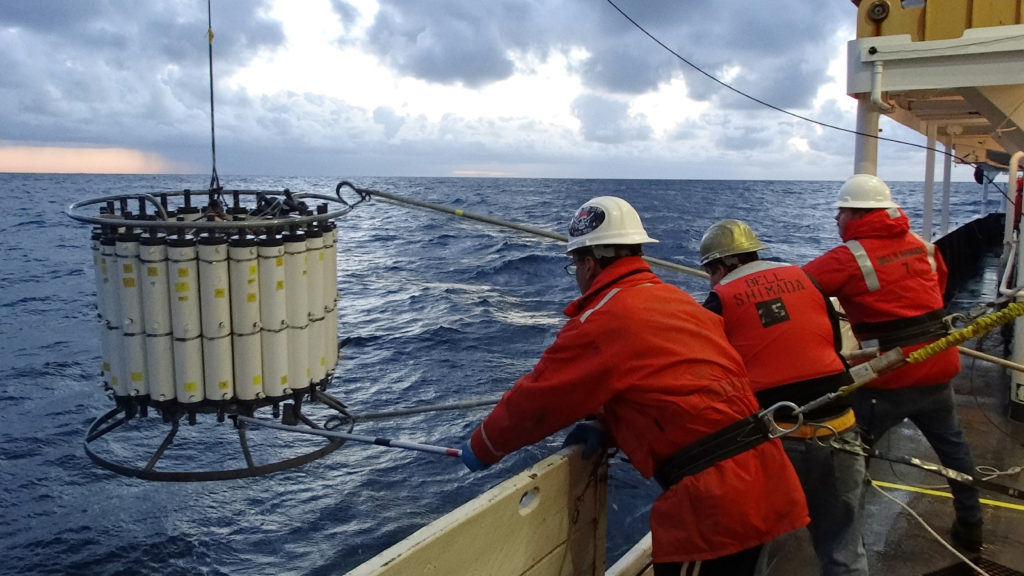
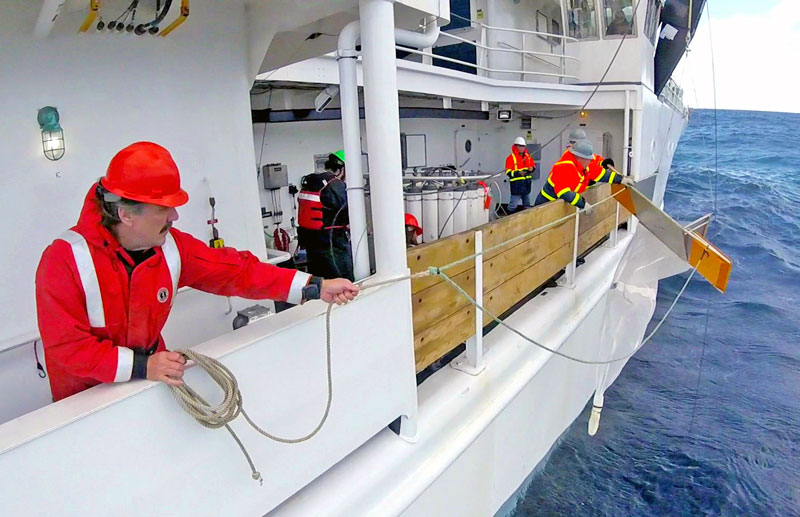
Station Operations
The following operations are conducted during each standard CalCOFI station:
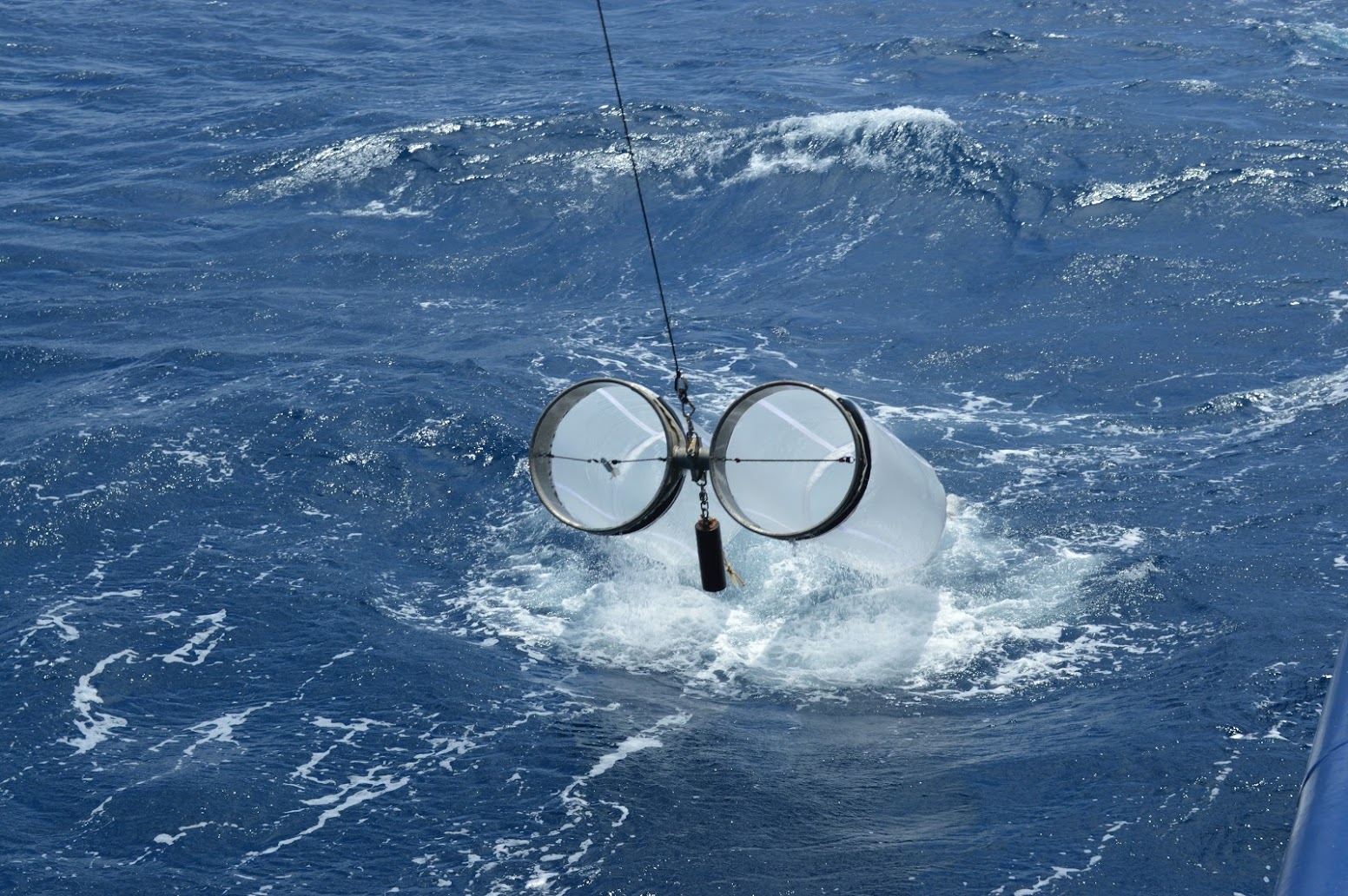
Bongo (CalBOBL) Net Tow
The Bongo Net is towed obliquely through the water column to collect plankton samples from the euphotic zone. The Bongo Net, formerly “CalBOBL”, consists of paired 505 μm mesh nets with 71 cm diameter openings. The nets are 3 m in length; a 1.5 m long cylindrical portion that is
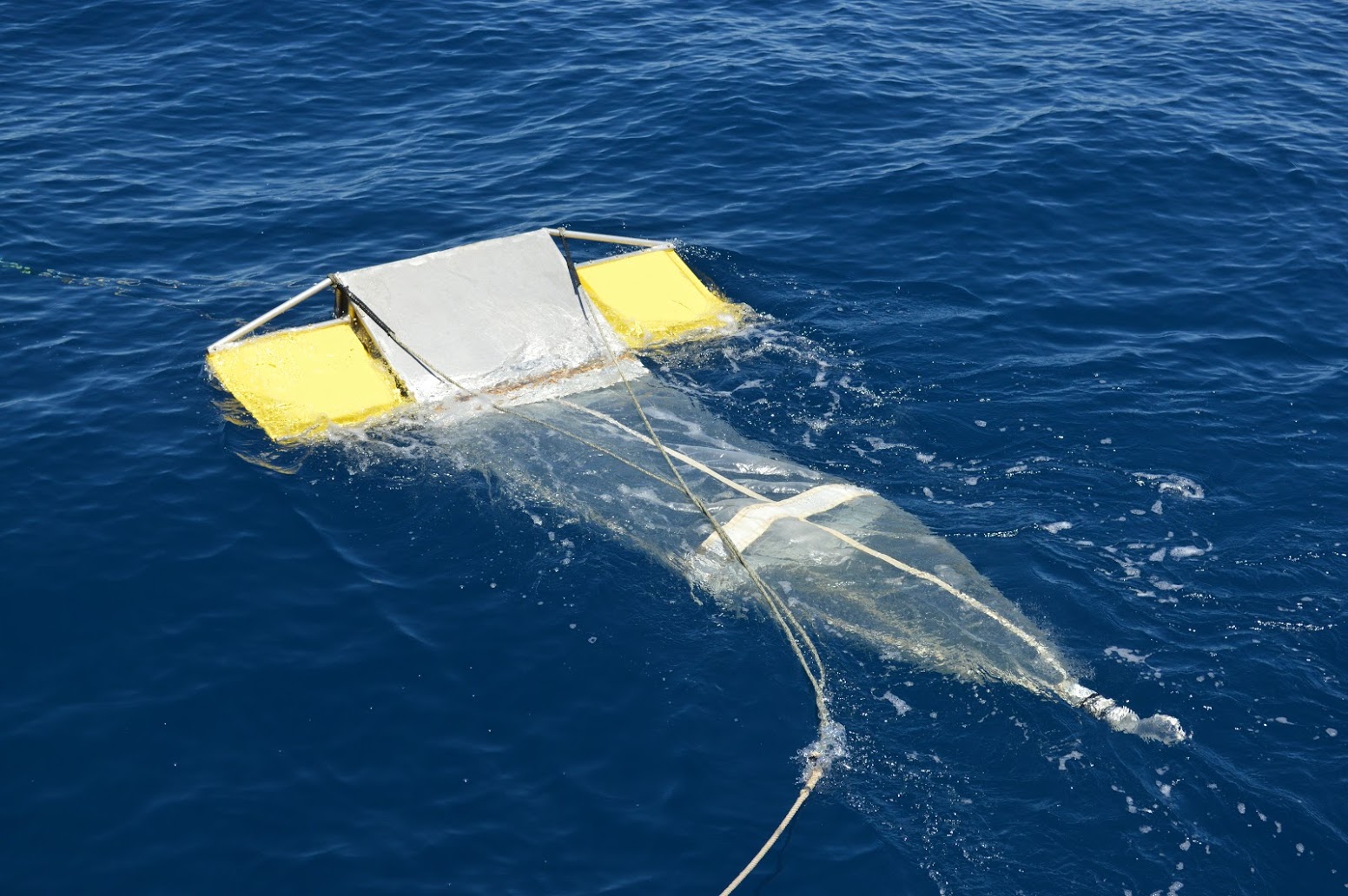
Manta Net Tow
The Manta Net is towed horizontally to collect plankton samples from the ocean surface. The Manta Net, an improved design of the Neuston Net, is a twin-winged continuous-flow surface tow. The net is designed to collect organisms in the upper 8 cm of the ocean, otherwise known as “neuston”. The Manta net is
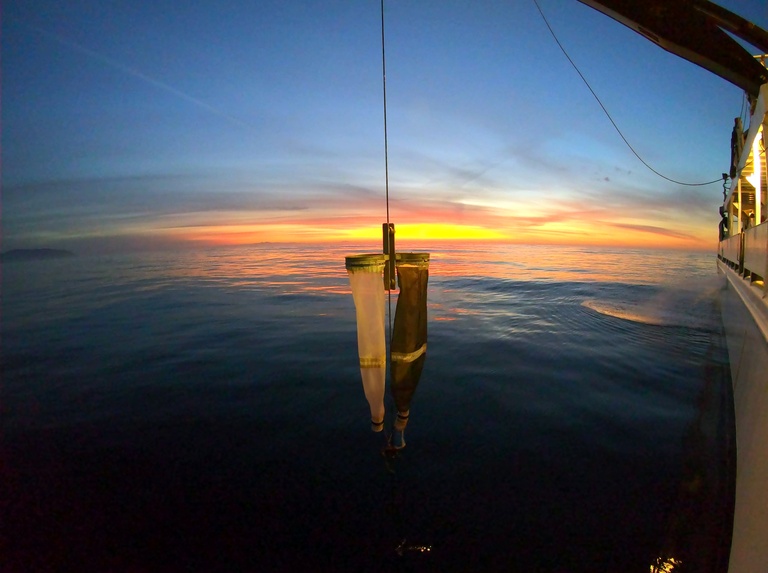
Pairovet Net Tow
The Pairovet Net is towed vertically through the water column to collect fish egg samples from the upper euphotic zone. The Pairovet Net consists of paired 25 cm diameter 150 μm mesh nets. The nets are 1.5 m in length; a 0.8 m cylindrical portion joined to 0.6 m conical portion, tapering to
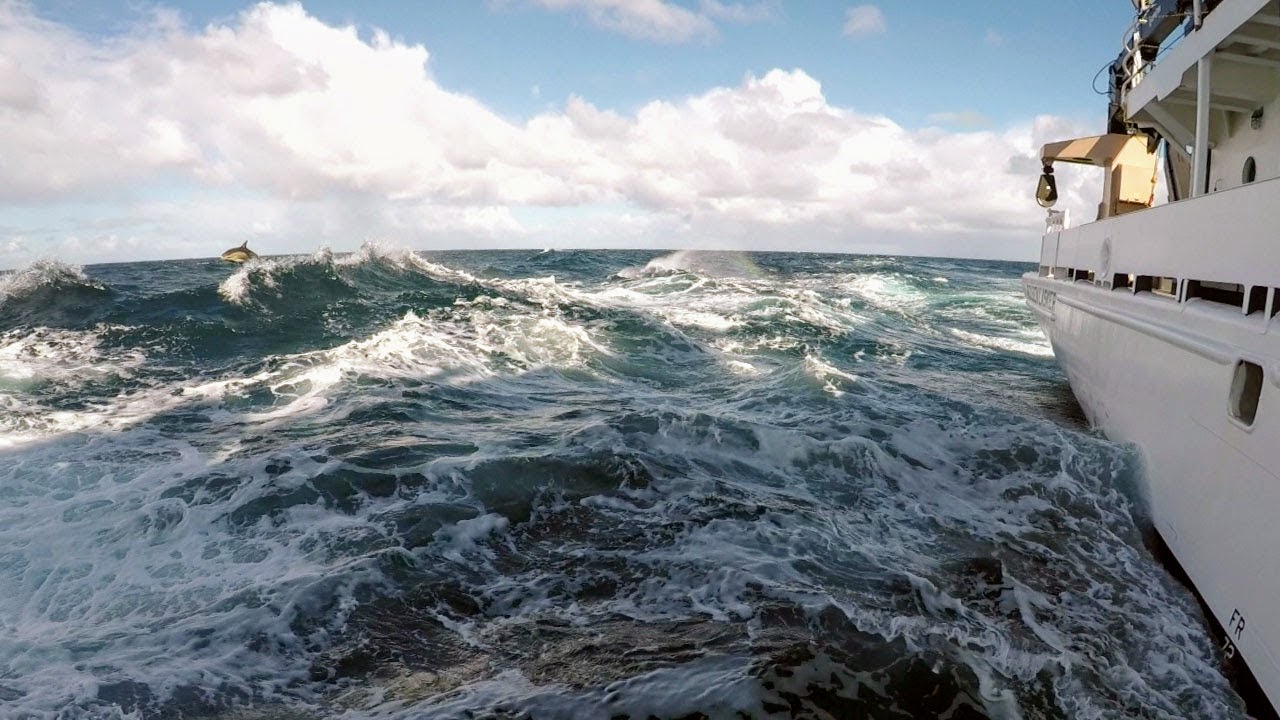
Weather Observations
Weather observations are tabulated during station, to supplement data collected continuously by shipboard integrated measurement systems (MET/SCS). Weather observations are made at each station occupied during CalCOFI cruises, typically recorded by a fisheries scientists during CTD casts. See below for parameters that are observed. Visual parameters (waves, clouds, Secchi depth)
Underway Operations
The following operations are conducted during transits between stations:
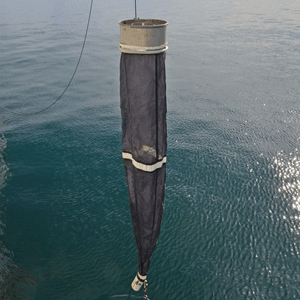
PRPOOS Net Tow
The PRPOOS Net is towed vertically through the water column to collect plankton samples from the euphotic zone. The PRPOOS (Planktonic Rate Processes in Oligotrophic Ocean Systems) Net, formerly known as the Soutar-Hemingway Animal Trap or “SHAT” (Kramer 1972), is a vertical tow to collect data for the LTER (Long Term Ecological Research)
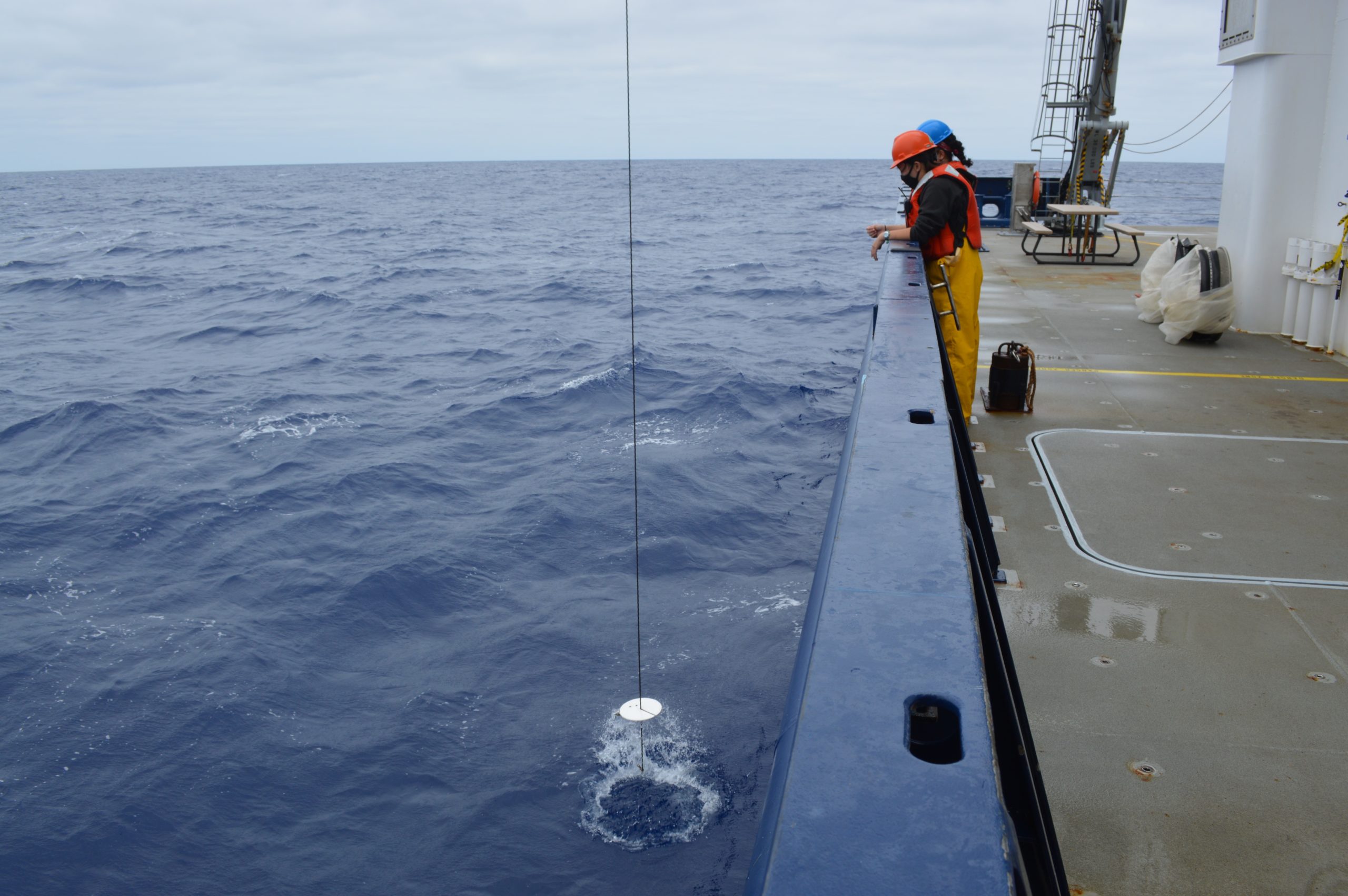
Secchi Disc
The Secchi disc is lowered vertically through the water column until it disappears from sight. Secchi disc measurements are used to determine the 1% light level and are performed on all daylight stations, weather-permitting. Other Station Operations:
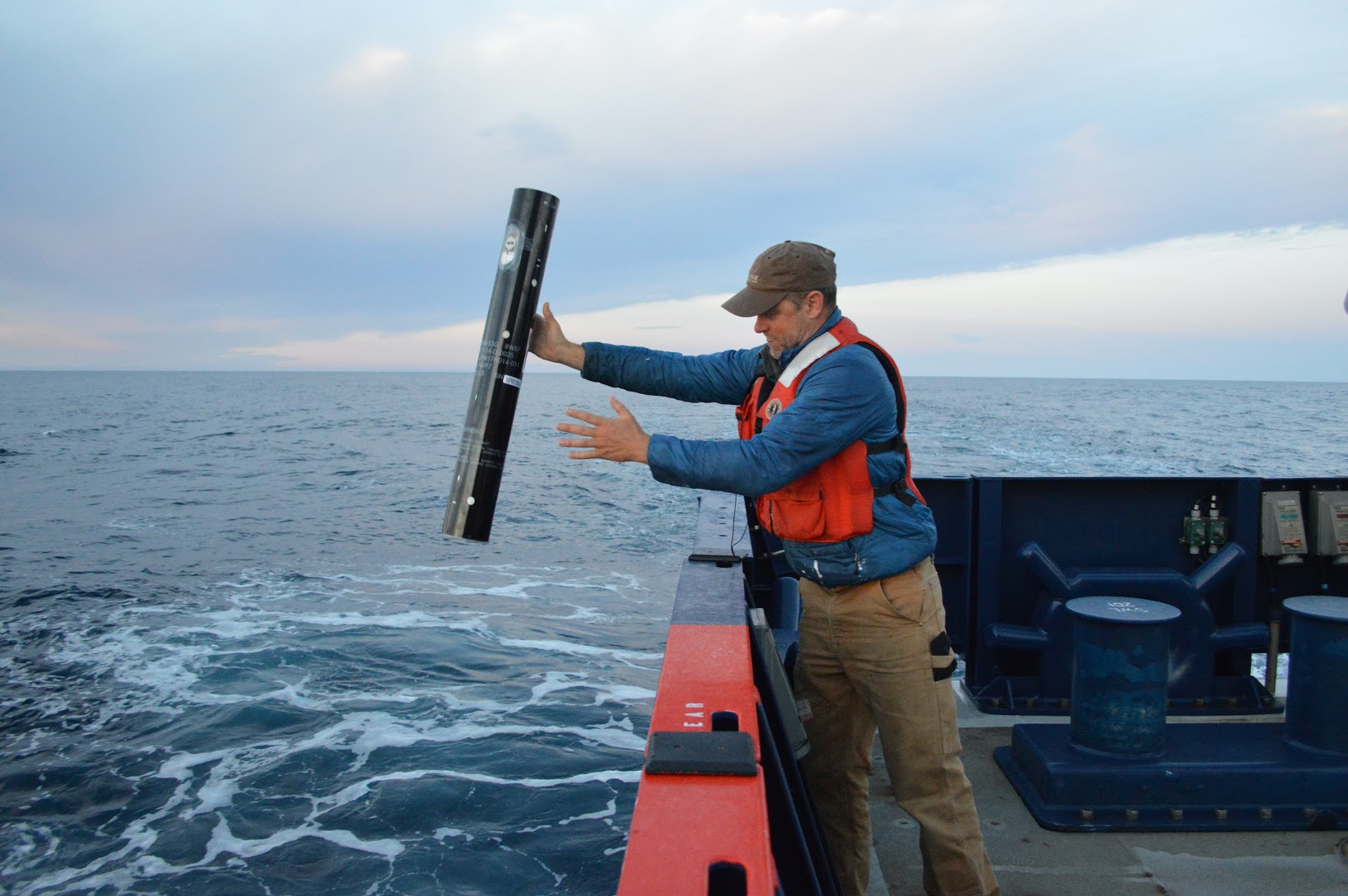
Sonobuoy Deployment
Sonobuoys are deployed prior to arriving on station to detect marine mammal vocalizations. Marine Mammal acousticians deploy sonobuoys about 1 mile before arriving at each CalCOFI station in order to detect marine mammals. Other Station Operations:
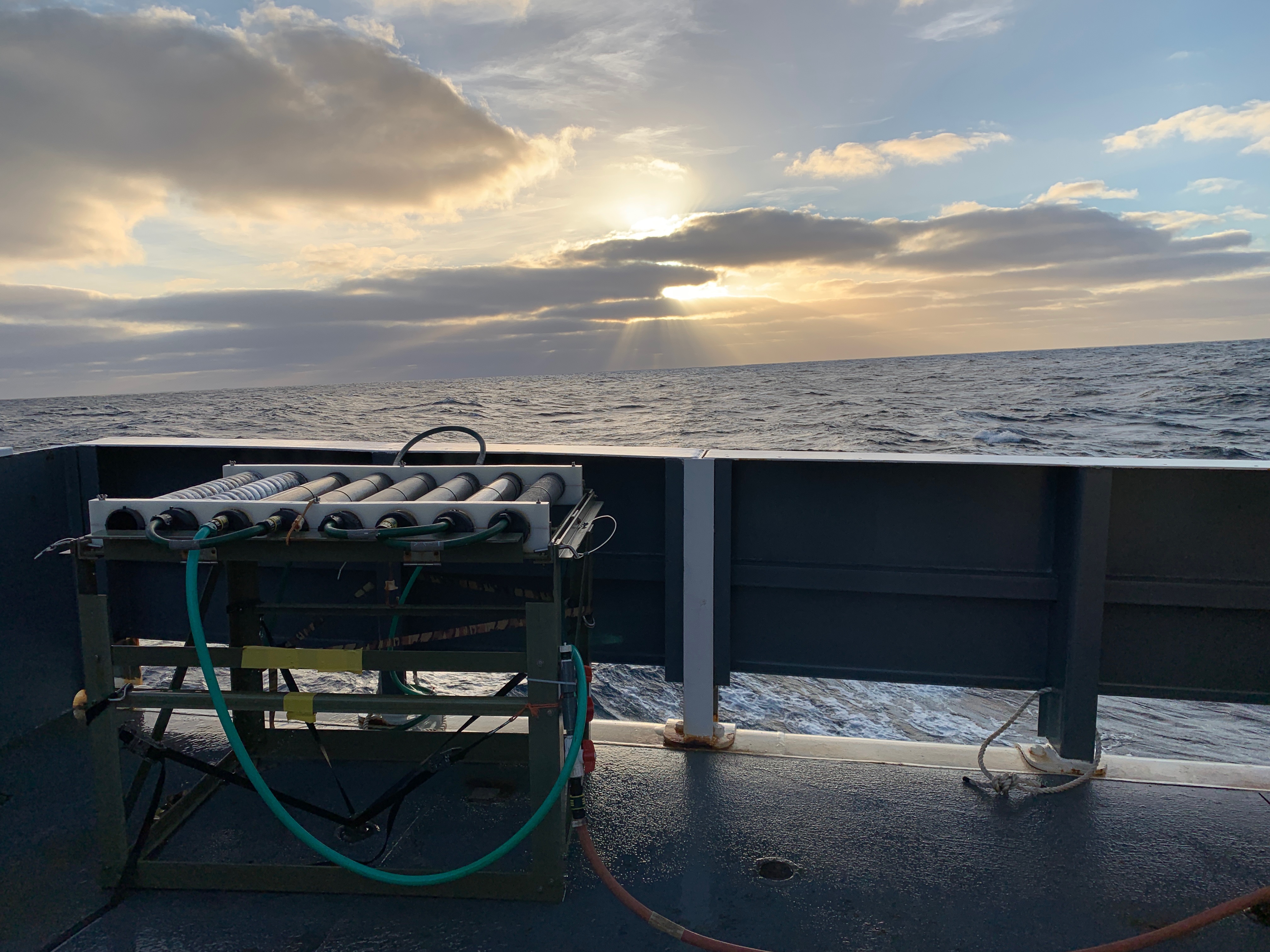
Primary Productivity Incubation
Primary productivity incubation experiment: at local apparent noon (LAN; ~11:30-12:20), each day of the cruise, a primary productivity incubation experiment is started with seawater samples collected from the CTD cast. Eighteen samples are drawn from six calculated light-level depths determined by the Secchi depth. Each seawater sample is inoculated with
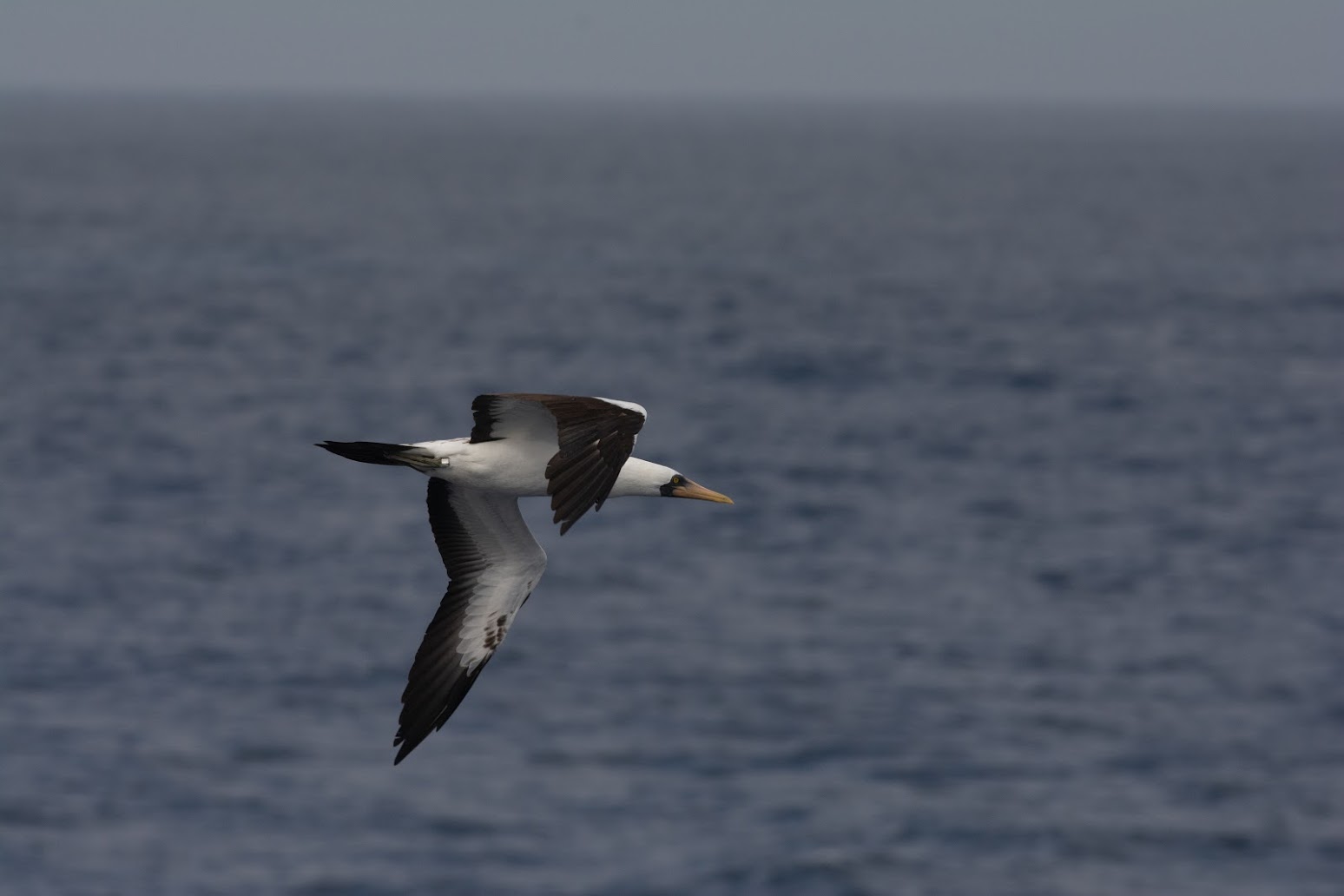
Bird Observations
During transit between daytime stations, a bird observer records location and species of various sea birds. Other Underway Operations:

Marine Mammal Observations
During transit between daytime stations, two marine mammal observers visually identify marine mammals. During transit between daytime stations, a towed hydrophone array, monitored by an acoustician, records marine mammal vocalizations. On daytime stations, sonobuoys are deployed and monitored by an acoustician, recording marine mammal vocalizations. Other Underway Operations:
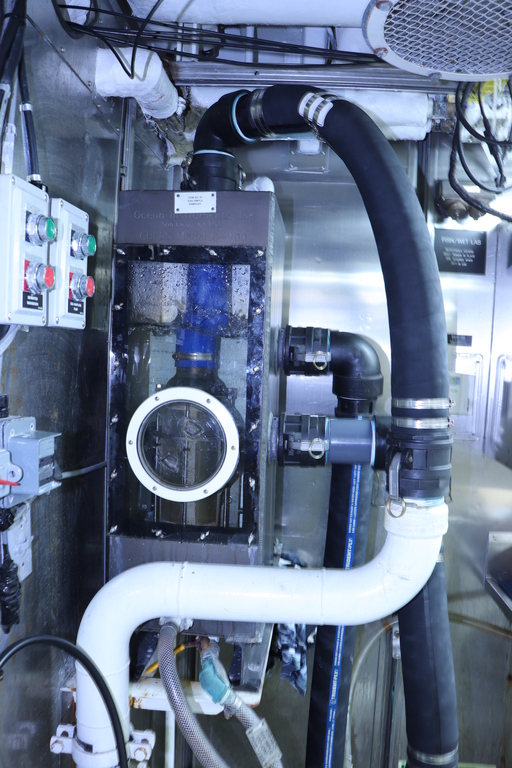
CUFES
Continuous Underway Fish Egg Sampler The Continuous Underway Fish Egg Sampler (CUFES) is an instrument used to collect pelagic eggs of fish, and the corresponding hydrographic data, from ~3m depth on moving ships. The CUFES system consists of an inboard or outboard submersible pump, concentrator and sample collector. Water is



Underway System (MET/SCS)
Primary productivity incubation experiment: at local apparent noon (LAN; ~11:30-12:20), each day of the cruise, a primary productivity incubation experiment is started with seawater samples collected from the CTD cast. Eighteen samples are drawn from six calculated light-level depths determined by the Secchi depth. Each seawater sample is inoculated with
